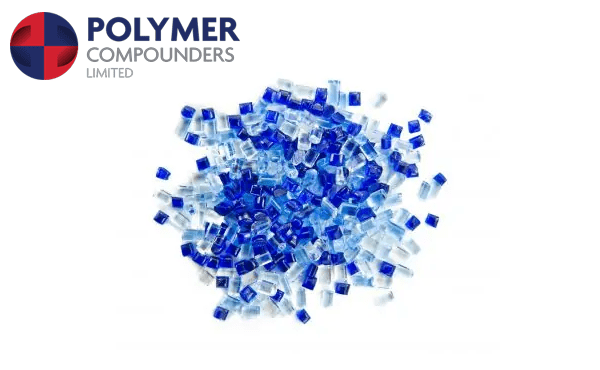Polymers Compounded to Your Specifications

If you’re looking for a high-quality, custom-formulated polymer, you’ve come to the right place. Elite Advanced Polymers offers natural, structured and specialty formulas, and their state-of-the-art R&D and testing facilities ensure quality and consistency. Plus, we put a personal focus on customer service. Whether you need a single ingredient or a large batch, we have the solution for you visit this website polymer-compounders.com
Custom Compounds
If you need polymers compounded to your exact specifications, look no further than Elite Advanced Polymers. We have state-of-the-art R&D facilities and testing capabilities that allow us to create custom formulas that meet your exact requirements. We offer complete batch flexibility and specialty formulations, as well as a personal focus on customer service and quality. Contact us today to learn more about our custom polymer formulations.
Polymers are organic compounds made up of many different monomers that have similar chemical properties. Polyethylene, for example, is made up of tens of thousands of ethylene monomers. This thermoplastic compound is clear and crystalline. Polypropylene, on the other hand, is harder than polyethylene and is primarily used in the textile industry and in molding. These materials combine properties that make them an excellent choice for many applications.
Structured Polymers
If you are looking for a material that is structurally sound but does not require a high level of processing, you should consider structured polymers. These materials are typically cross-linked polymers that have been formed into different shapes and sizes. Some are even cross-linked to each other and can be amorphous or crystalline in appearance. Though not always used in their purest form, these materials are often combined with other additives or fillers for added strength and performance. In addition to the polymers, they can also be blended with fibers, inorganic or organic materials, or both.
Structural polymers are useful because they include both micro and macroscopic mechanical properties in their composition. This makes them more inclusive than classical structural materials, which are characterized by crystalline or amorphous properties. These compounds can be used in aerospace applications and in a variety of industrial applications. In 1992, man-made plastics were produced in the United States, which accounts for more than 70 billion pounds annually.
Natural Polymers
A variety of materials are natural polymers, including proteins and carbohydrates. These materials are abundant in nature and can be extracted for use in compounding products. Examples include wood and seaweed, which are readily available for processing. More recently, interest in waste materials from agro-based industries, such as coffee and fruit processing, has grown. Natural polymers are a versatile solution for many applications, including lining and filling materials.
Unlike synthetic polymers, natural polymers are custom-compounding. You can get the type of natural polymer that meets your exact specifications without undergoing any chemical processing. Many natural polymers are made from cellulose, protein, silk, and wool. They are also used in building materials, such as composites and textiles. They are the basis for many products used in our daily lives, such as paper, rubber, and clothing.
Semi-Inorganic Polymers
Inorganic polymers are those without carbon atoms in their backbone. These compounds are often hybrids, containing both organic and inorganic components. Silicone rubber, for example, is a type of inorganic polymer. Silicone rubber has a number of desirable properties, including low-temperature flexibility and electrical conductivity. Depending on the specification, it can also have tunable properties, such as non-flammability.
The process used to manufacture semi-inorganic polymers is a combination of organic and inorganic glassy polymers. Organic polymers can be compounded by varying their solubility in organic solvents, such as water. The solvents used in this process should ensure that the organic and inorganic polymer ingredients remain in solution until gelation has been achieved. Often, the two types of solvents are compatible, as long as they don’t alter the molecular weight of the polymer.
Nitrile Rubber
Nitrile rubber is a type of synthetic elastomer made of a combination of butadiene and acrylonitrile. The benefits of this material include its high resistance to acids, lubricating oils, water, and air. This compounded rubber can be custom-made to meet your specific requirements. Its properties and durability are influenced by the concentration of the chemical that you’ll be using.
Nitrile rubber is resistant to petroleum products and can be compounded for temperatures up to 250degF (121degC). Its temperature range means that nitrile rubber compounds can withstand virtually any automotive application. These compounds are also known as Buna-N. While they are the perfect under-hood material, they are not recommended for use in highly polar solvents. It’s recommended to avoid using nitrile in applications with high temperatures or exposure to sunlight or petroleum base oils.
Silicone Rubber
To make sure that your silicone polymers meet your specifications, a full-service silicone fabricator should have the engineering capabilities to provide customized tools and refined concepts. In addition to offering a range of silicone rubber grades, a full-service fabricator should also have a diverse range of secondary operations. This range of services includes slitting, punching, bundling, functional testing, and silk-screening.
A variety of special grades and forms of silicone rubber are available for a wide variety of applications. For example, silicone polymers are steam-resistant, metal-detectable, electrically conductive, chemical-, oil-, and gas-resistant, and flame-retardant. They are also available in virtually any color, including white. The list goes on. So which material is best for your specific application?